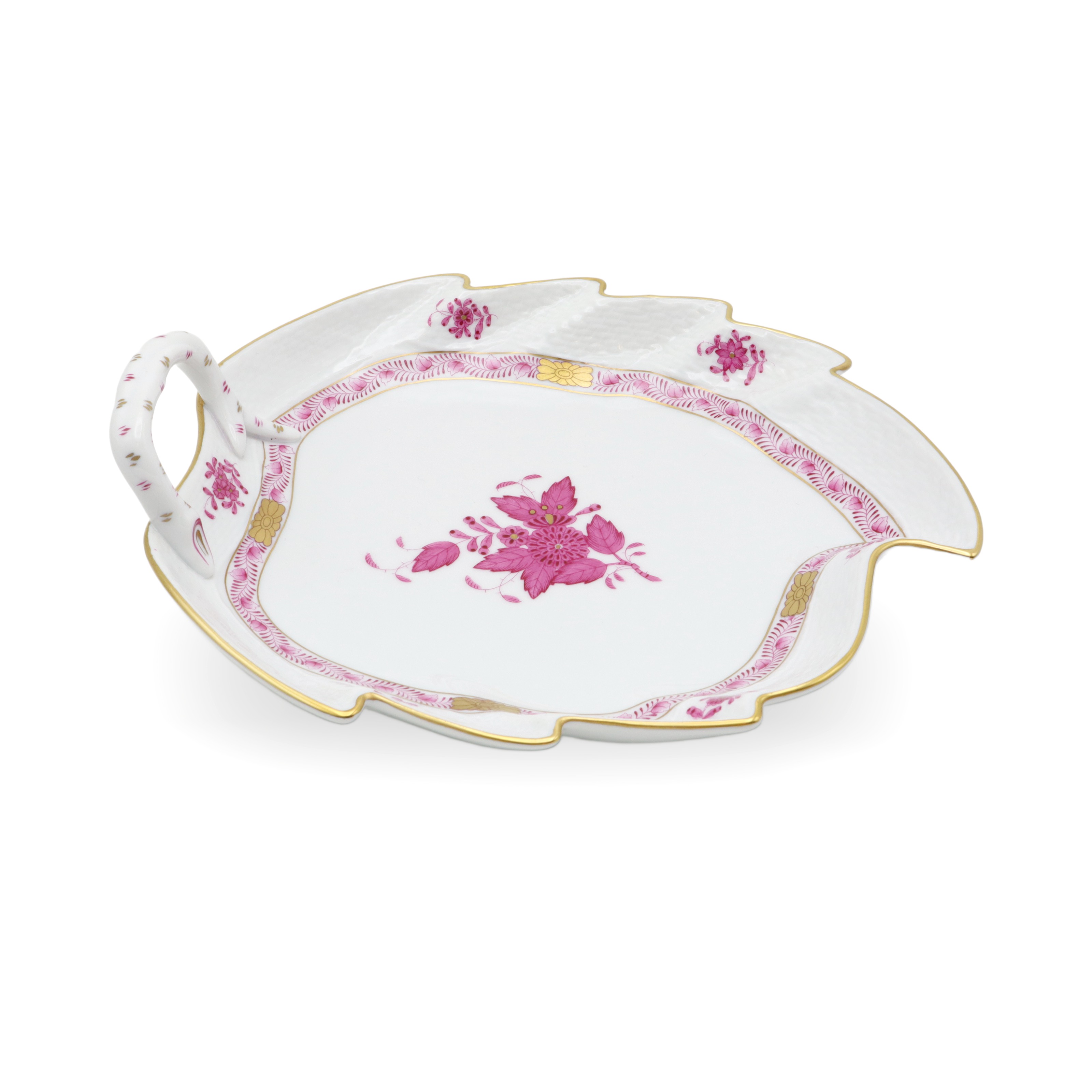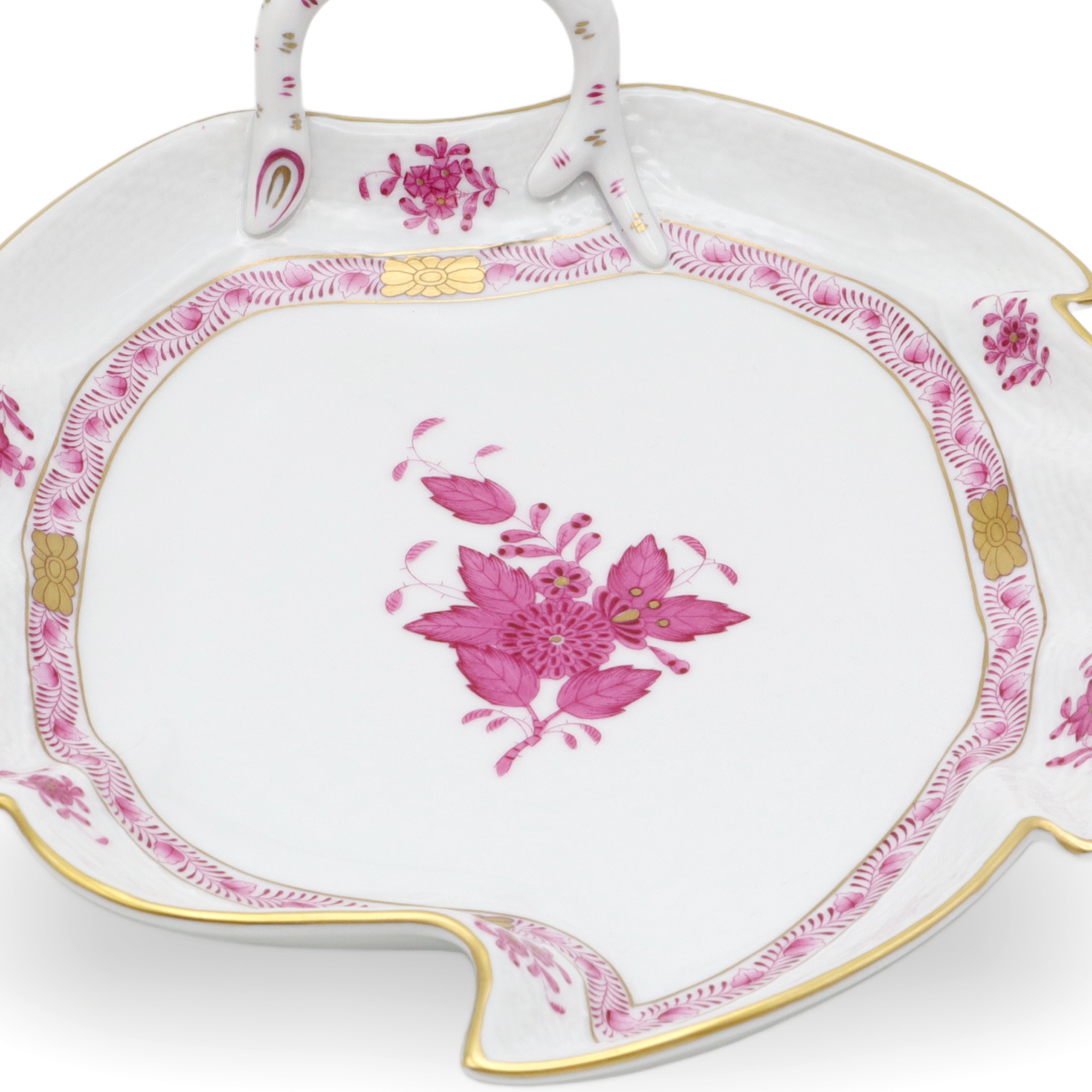Condition: Near Mint
Height: 3″ (7.5cm)
Width: 8″ (20cm)
Length: 9.5″ (23.75cm)
Year Manufactured: 1960
This elegant dish you’re looking at is a Herend Apponyi Purple Leaf Tray, made around 1960 in Hungary. Even just at first glance, its unique…
Condition: Near Mint
Height: 3″ (7.5cm)
Width: 8″ (20cm)
Length: 9.5″ (23.75cm)
Year Manufactured: 1960
This elegant dish you’re looking at is a Herend Apponyi Purple Leaf Tray, made around 1960 in Hungary. Even just at first glance, its unique leaf shape stands out, giving it an artistic flair that sets it apart from most modern tableware. The crisp white porcelain is beautifully accented with a hand-painted purple floral motif at the center, framed by delicate gold details along the rim and around the handle. At about 9.5 inches long, 8 inches wide, and with a height of 3 inches, it’s a perfect size for serving treats or simply displaying as a collector’s piece. What makes it so special is not just its striking look, but its age—being over 60 years old, it’s now considered a true vintage item. The tray has been kept in near mint condition, which is quite rare for something this old, so it makes a wonderful find for anyone who loves unique antiques.
Herend is a name that means something to collectors all over the world. The company was founded in Hungary back in 1826 and quickly became famous for its luxurious, hand-painted porcelain. The Apponyi pattern, also called the “Chinese Bouquet” design, was first introduced in the 1930s and is known for its intricate floral patterns and vibrant colors, usually green, orange, or purple like on this piece. Every Herend piece is handcrafted and hand-painted, meaning no two dishes are exactly alike. Part of what makes Herend porcelain, and the Apponyi line in particular, so sought after is the skill and time invested in each item—from casting and firing to painting and gilding. These pieces are popular not just with antique dealers, but also with everyday people who appreciate beautiful, usable art in their homes. Since genuine vintage items like this don’t show up every day—especially in such fine condition—they’re considered rare treasures for lovers of European porcelain.






















